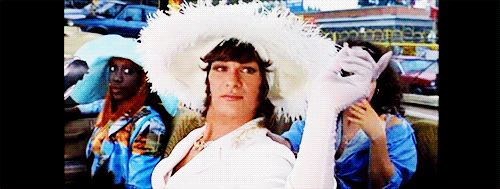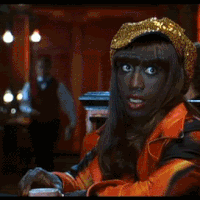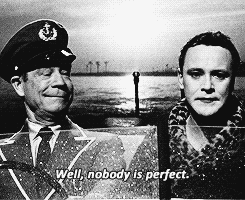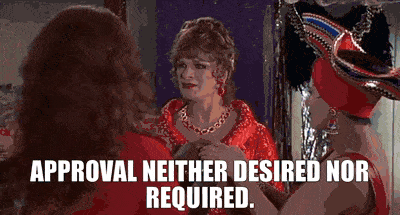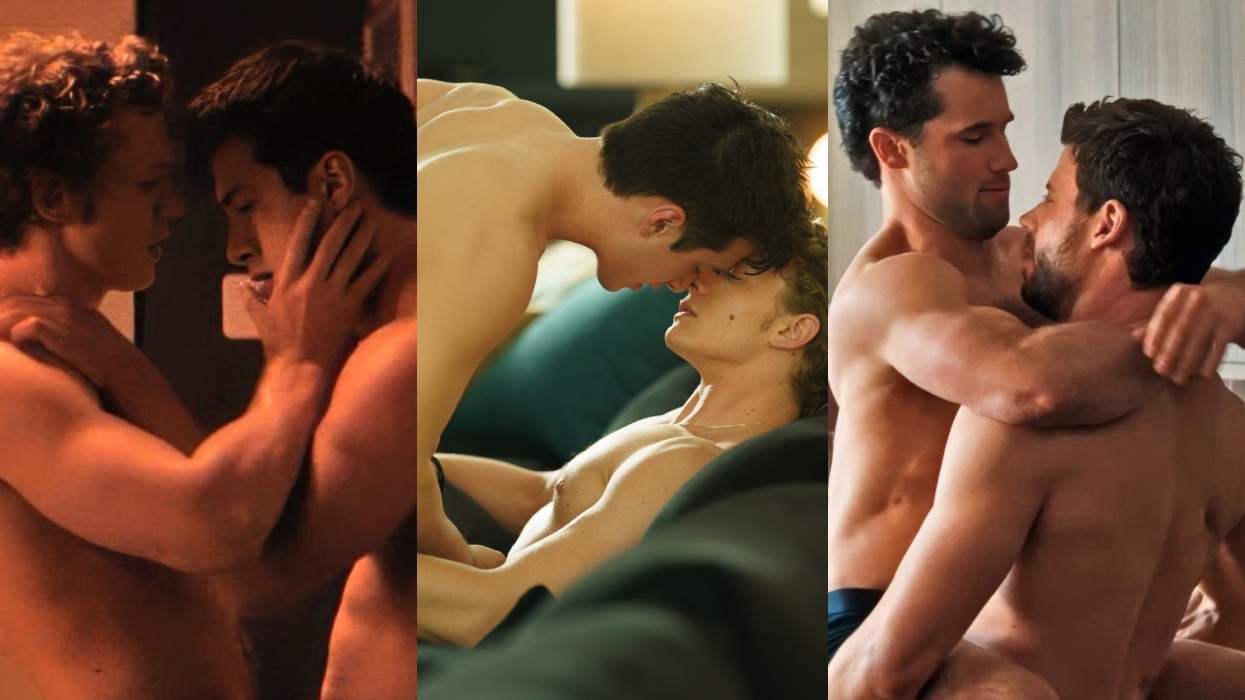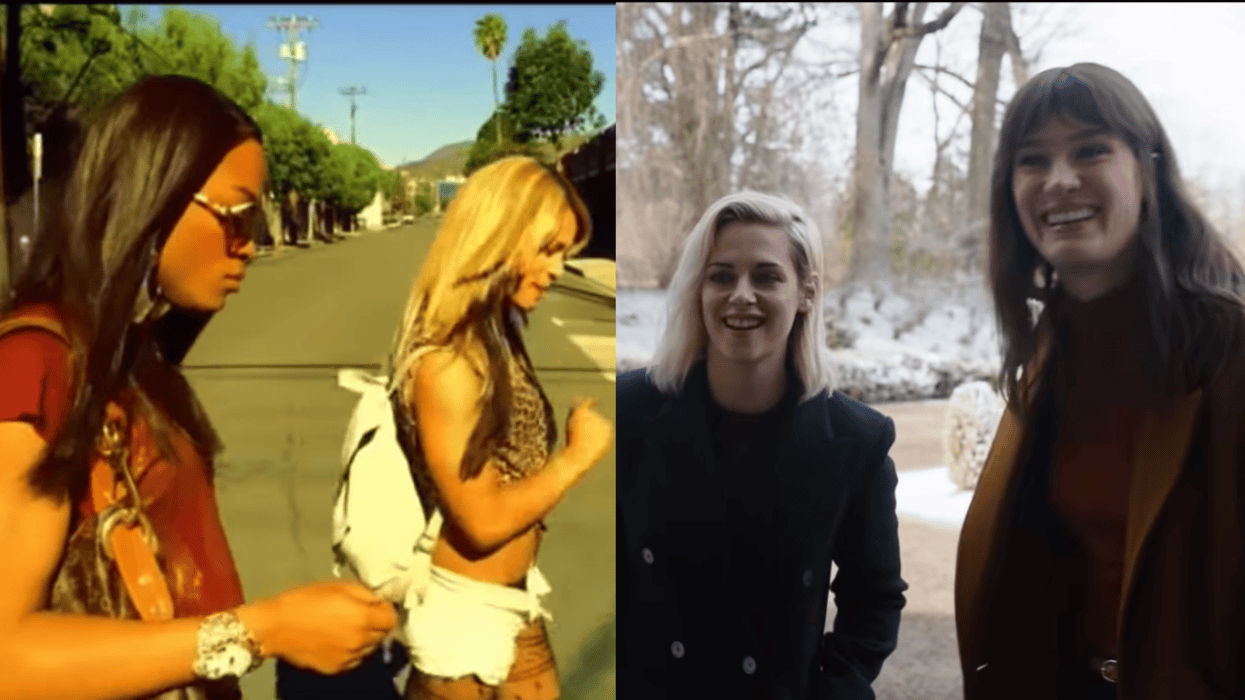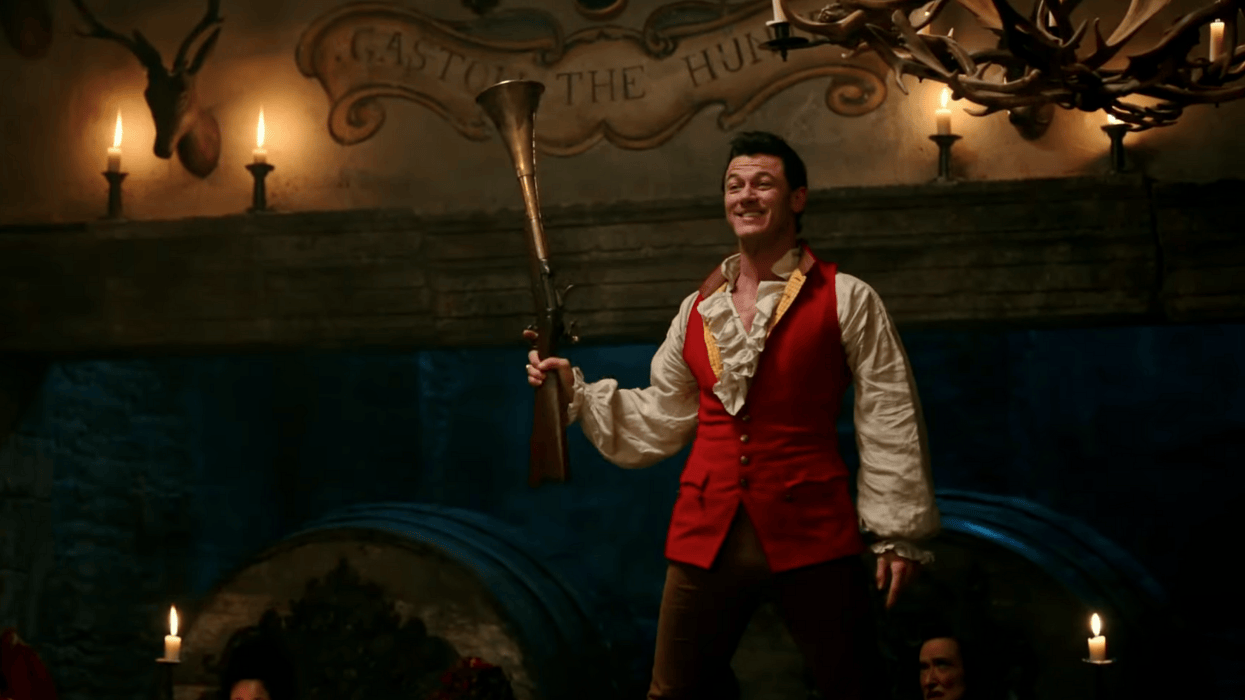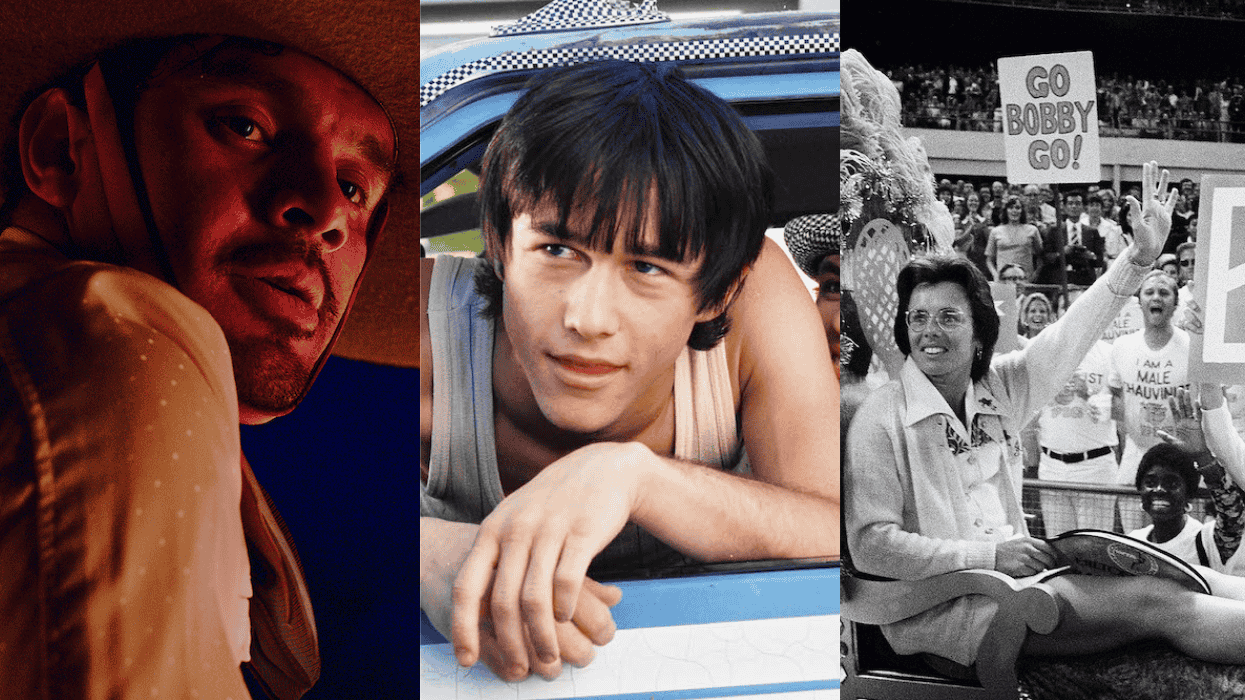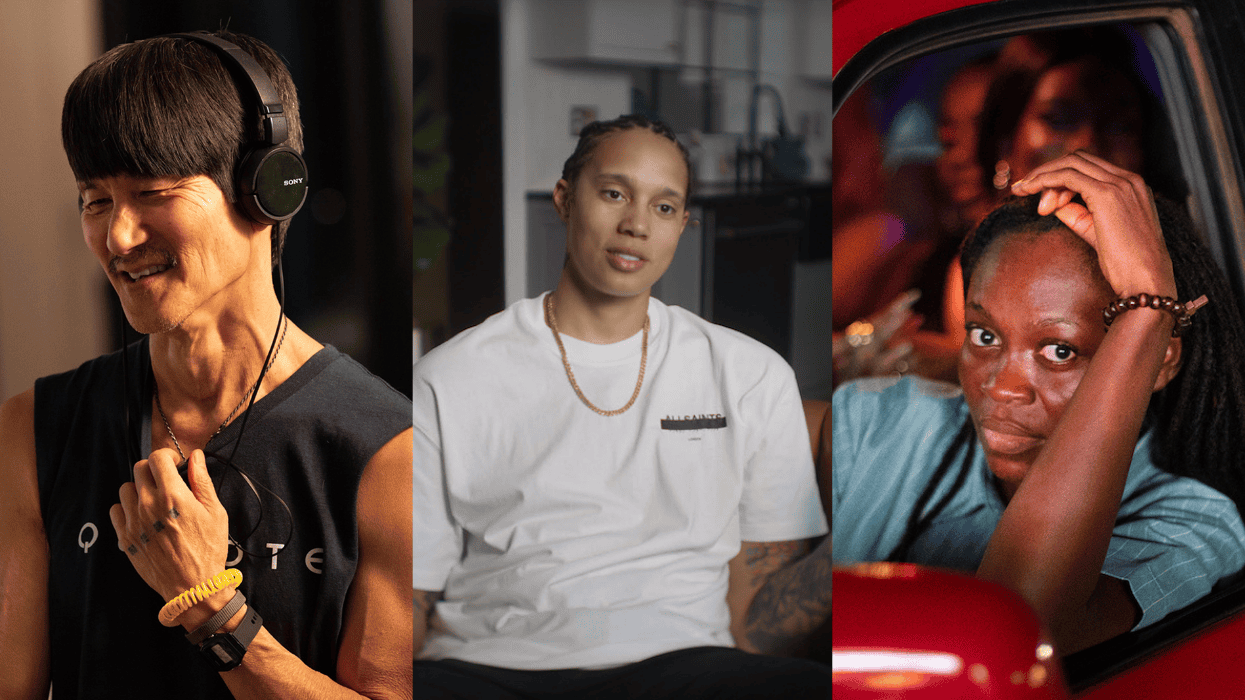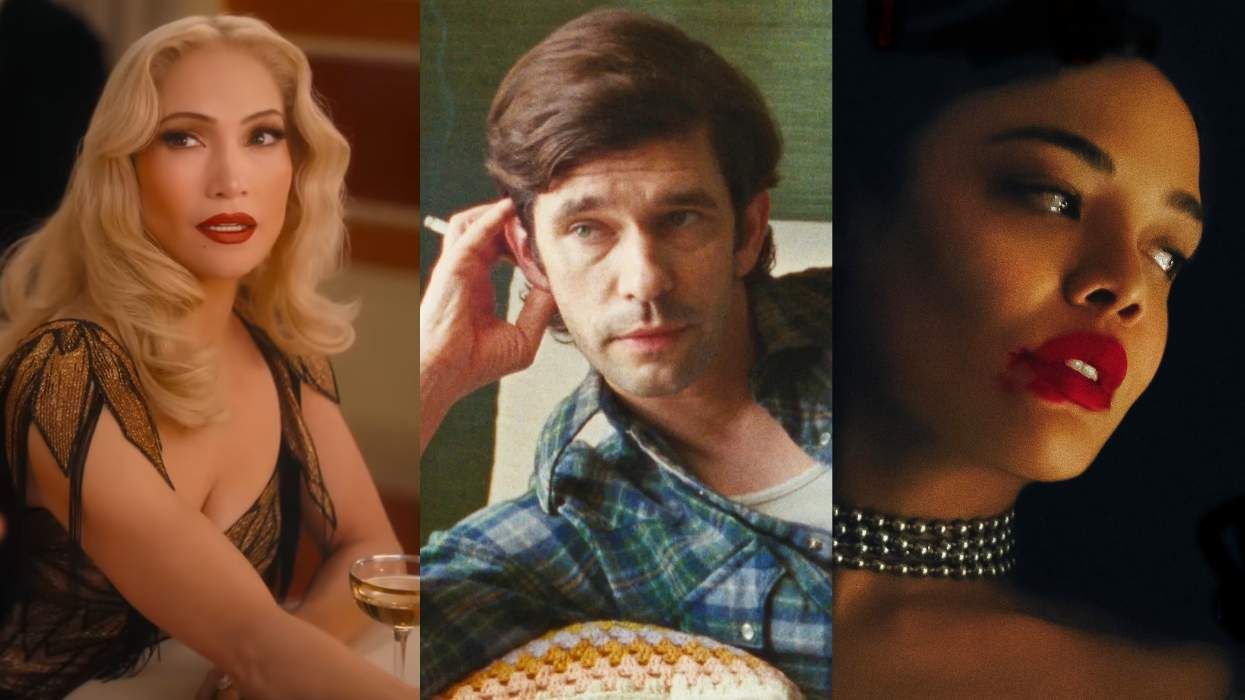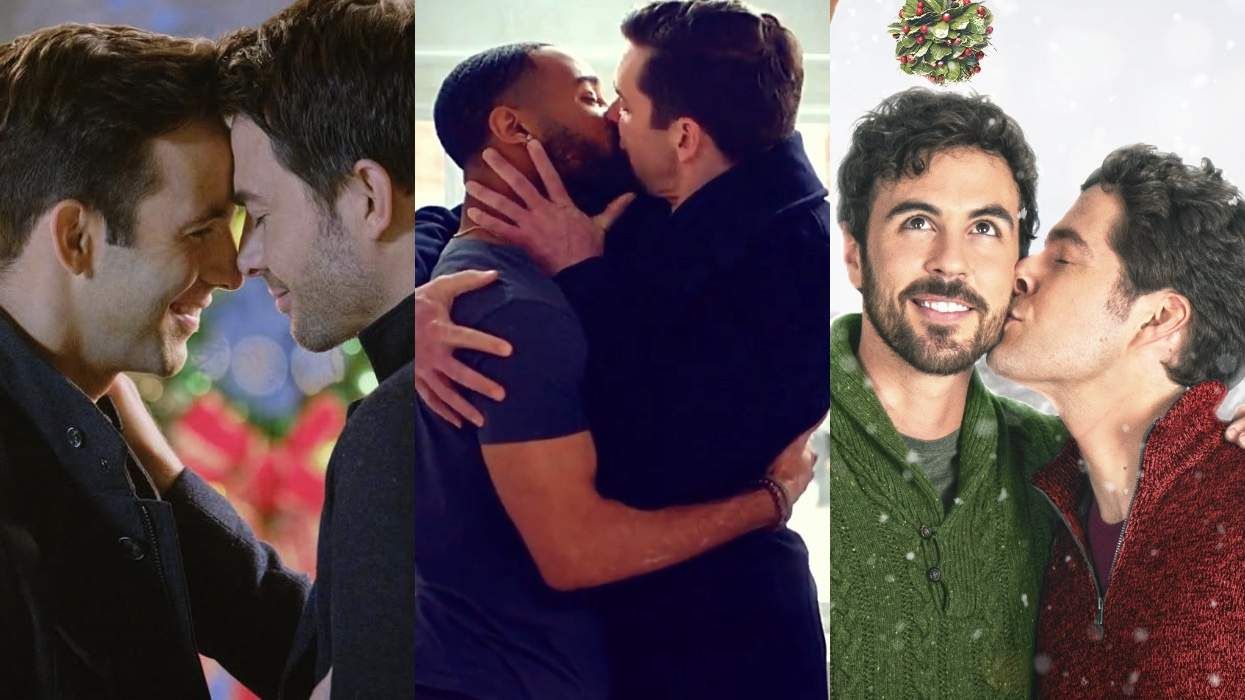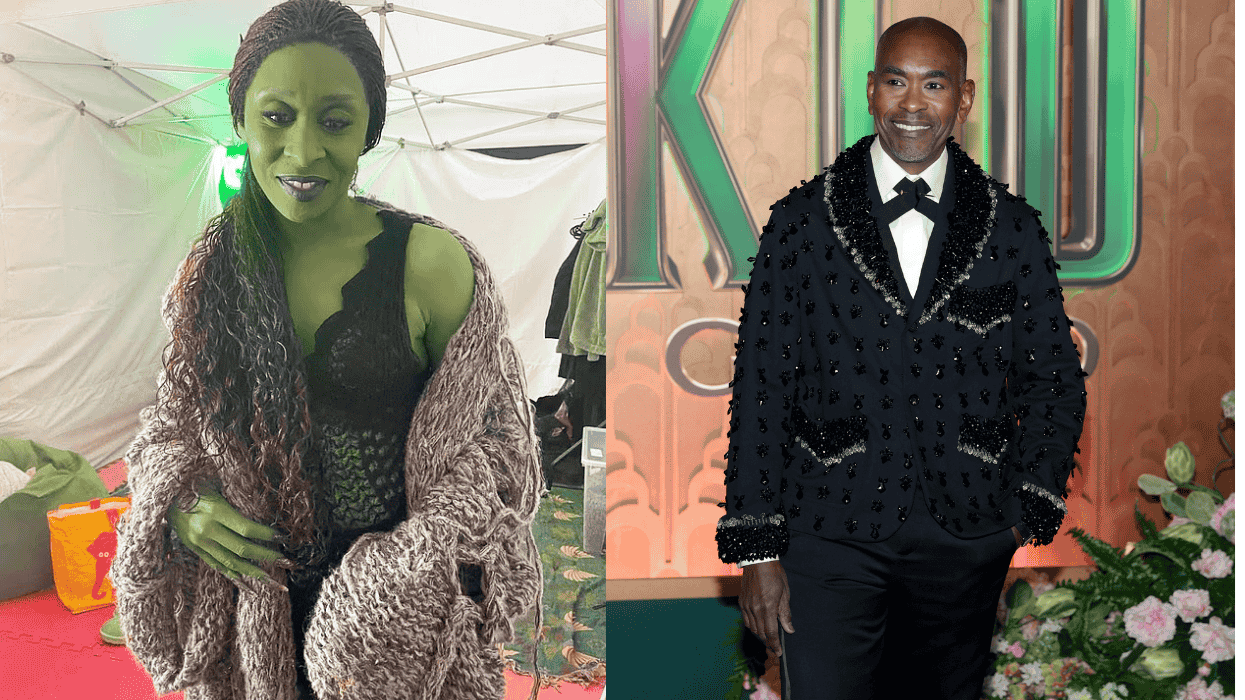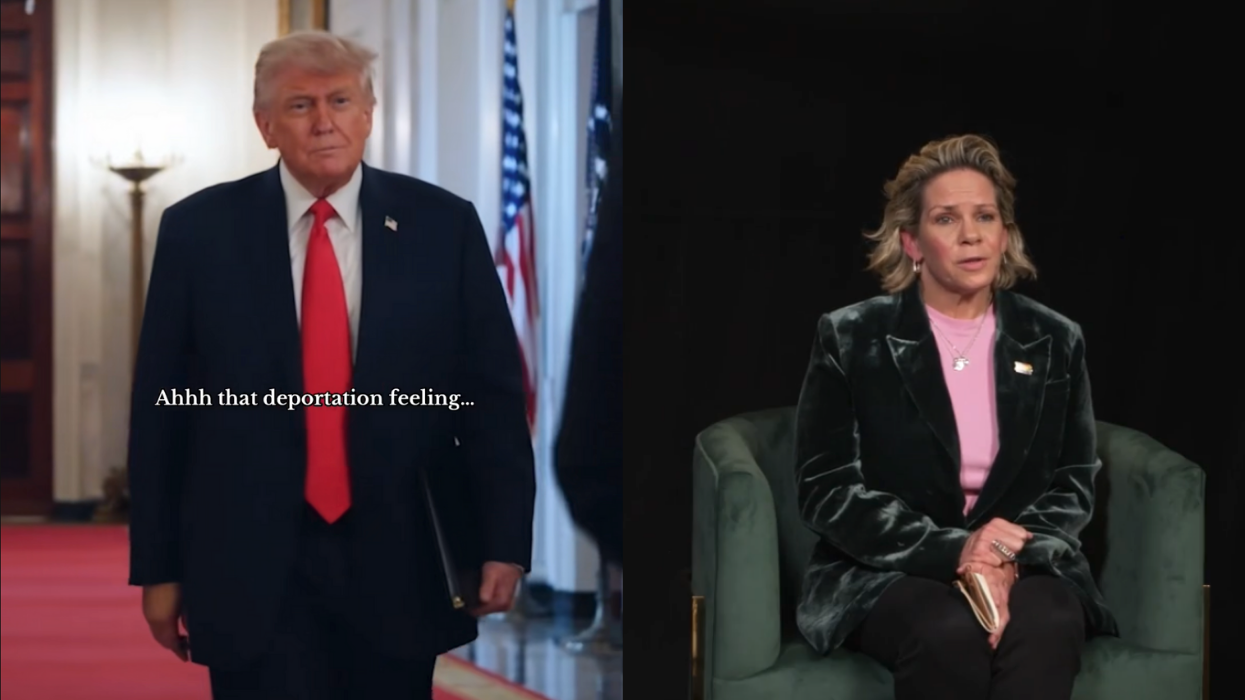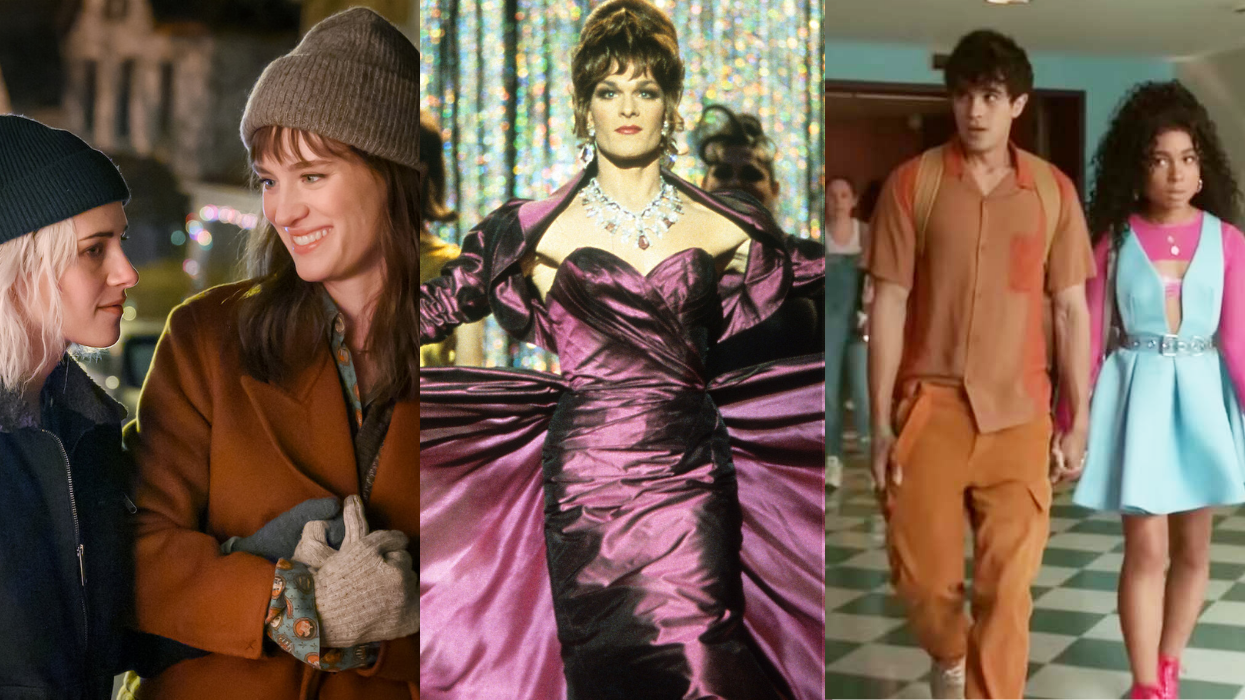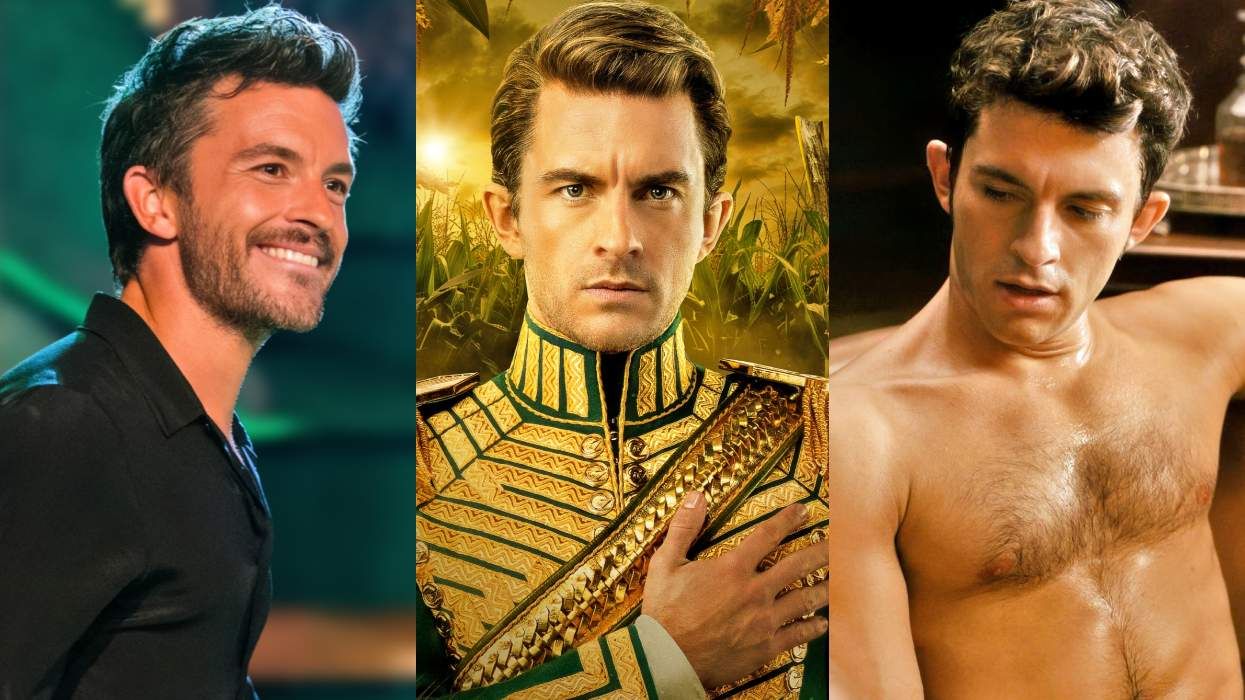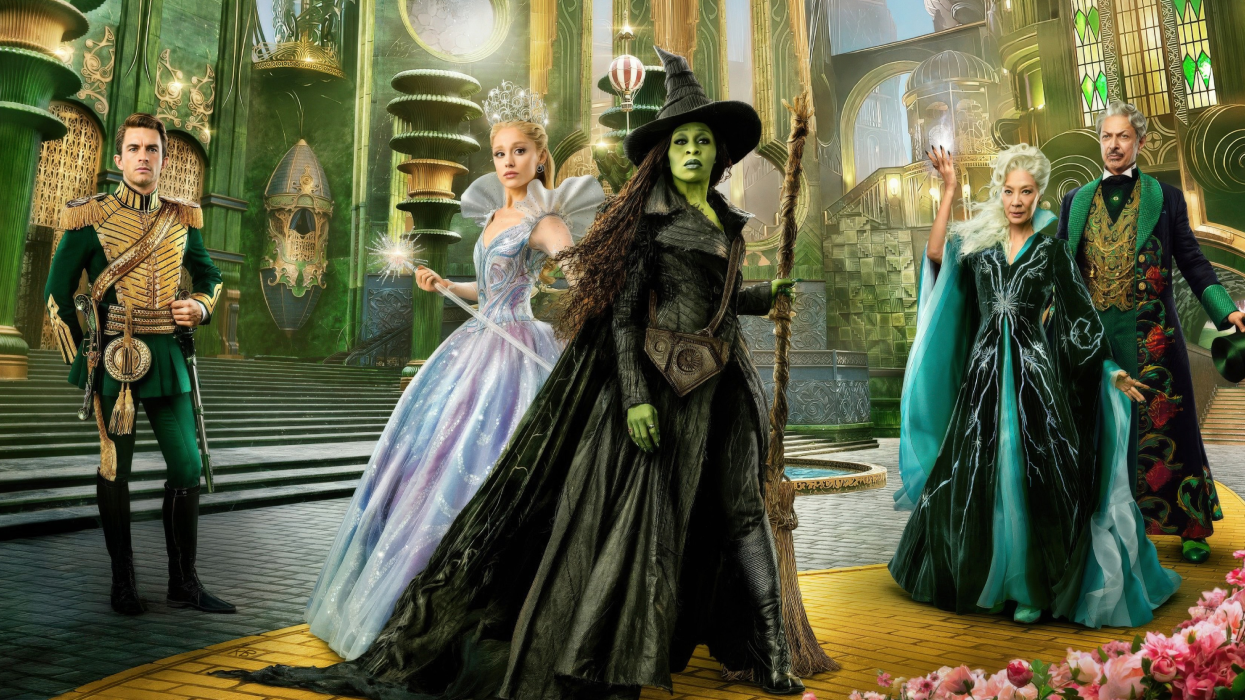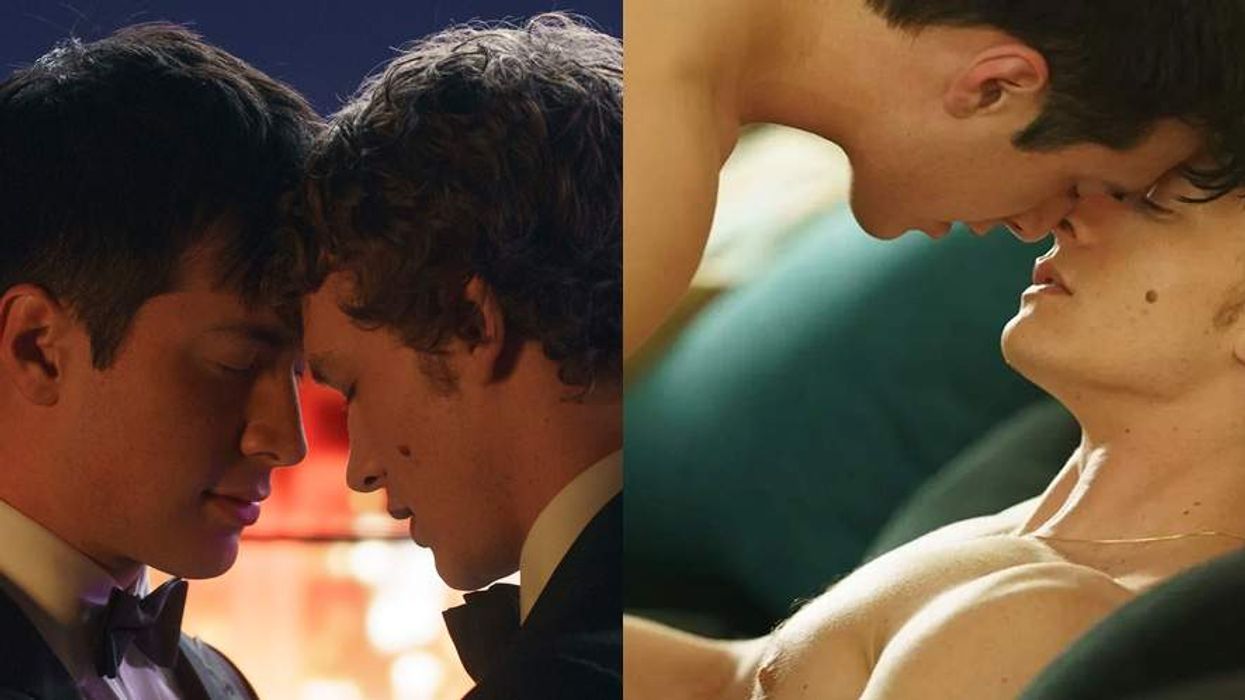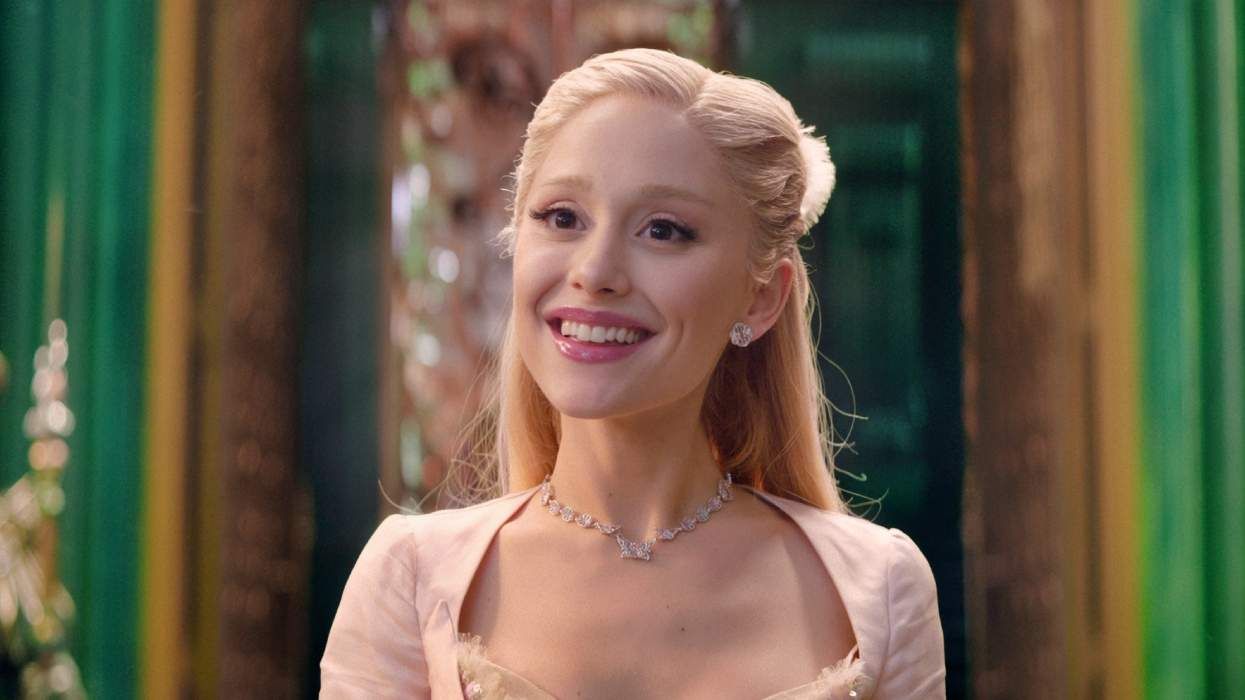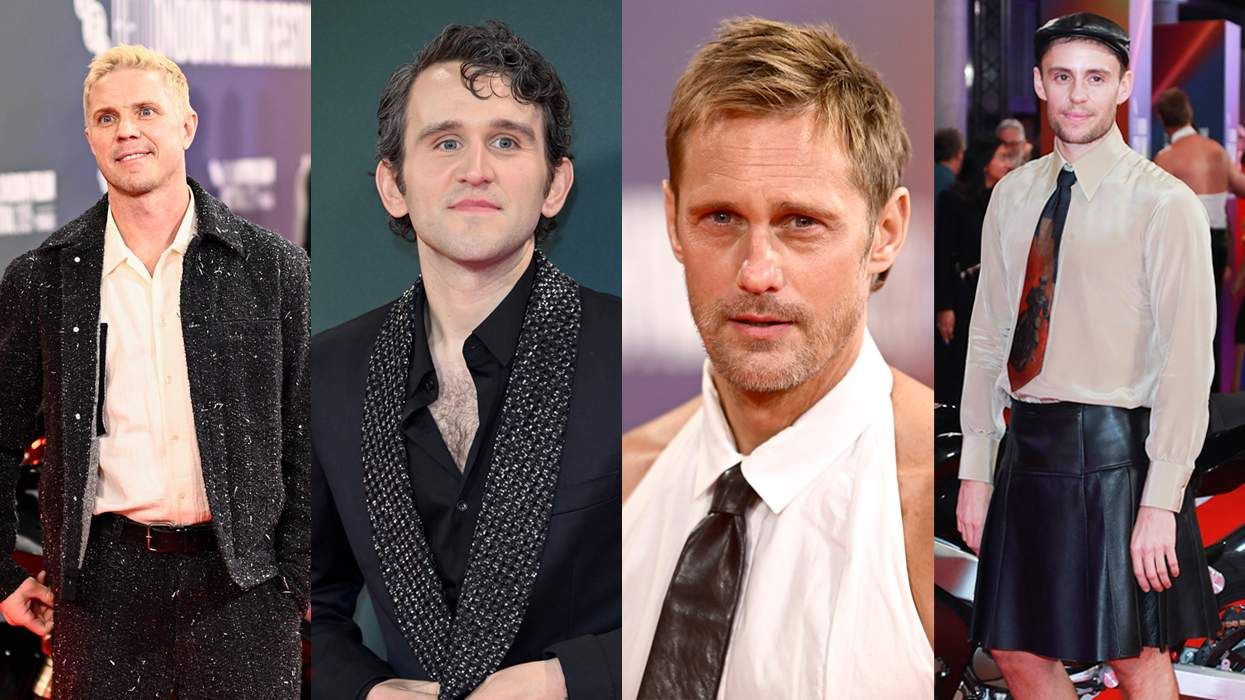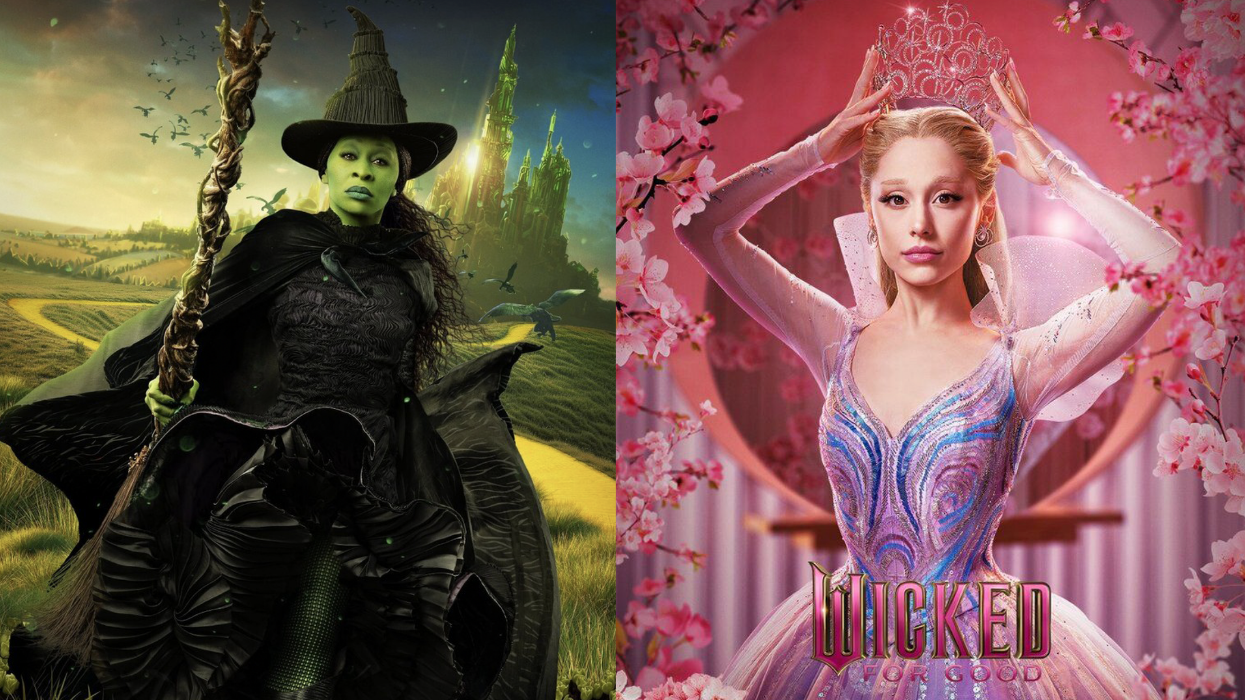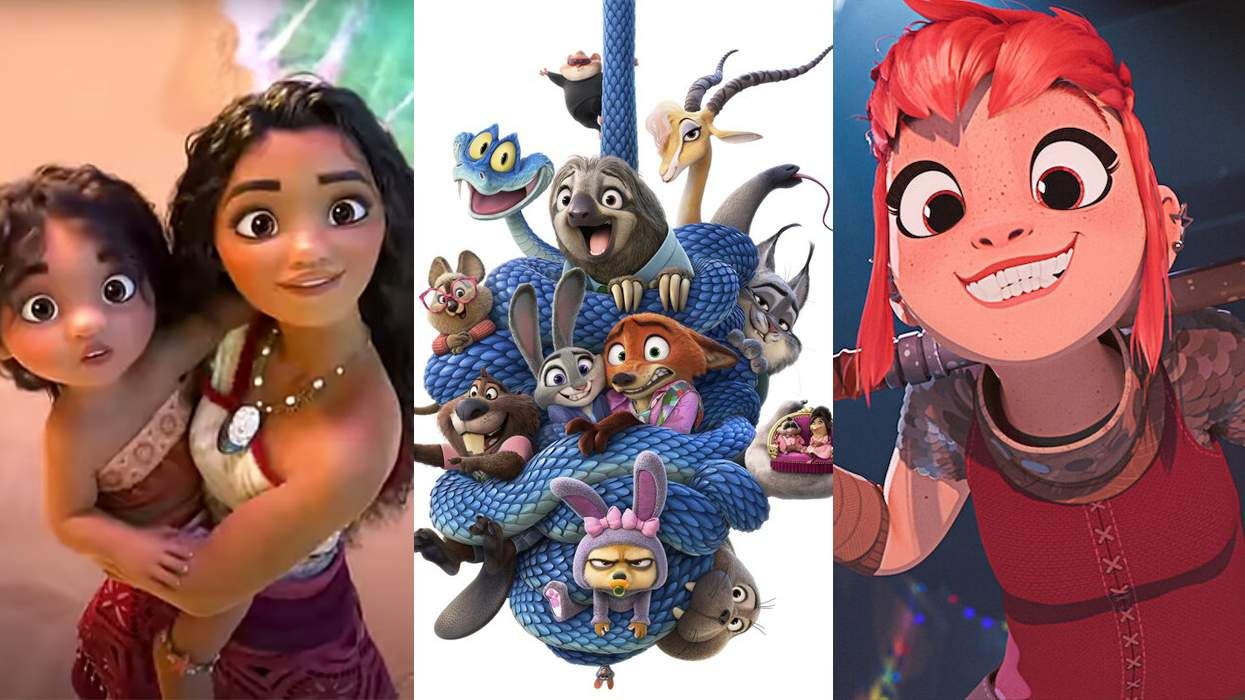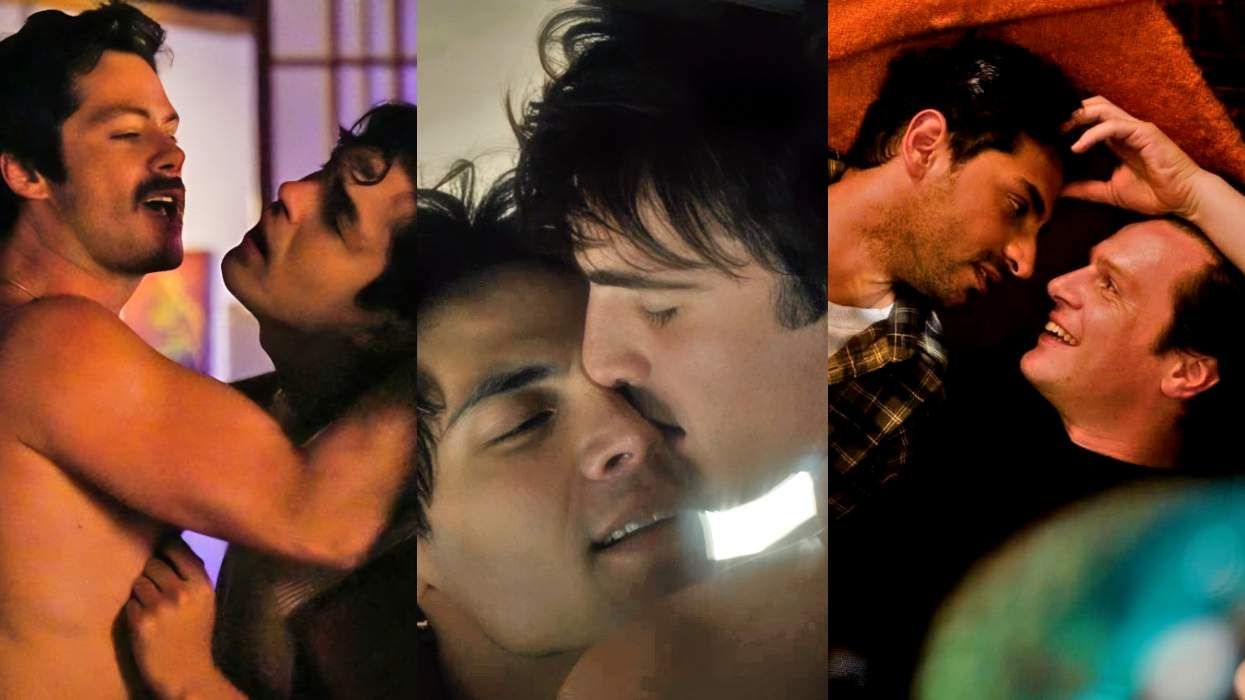To Wong Foo, Thanks for Everything! Julie Newmar is among the crop of new releases available this month on Netflix and after taking a look at the rain over New York this past weekend and audibly saying, "No thank you," I eagerly took it in as I had done countless times in my youth. Unlike a still-spry Julie Newmar, To Wong Foo has not aged well. Watching it as what's passing for an adult these days, two questions kept swirling around my head: 1.) How in Gay Hell did this get made?; and 2.) Why are they in drag for literally the entire movie?
The first question comes mostly from a place of grateful awe: that Patrick Swayze and Wesley Snipes, two leading men/action hero types, would play it gay and in drag for laughs (and for their parts, convincingly so) in a story as thin as John Leguizamo's pre-glow up shake-and-go wig. The second just comes from a writerly standpoint, like, we couldn't even come up with a half-baked McGuffin? They have to stay in drag because they witnessed the St. Valentine's Day Massacre and they're on the run from the mob. Sure, it's been done before but it's still perhaps filmdom's most ingenious and realistic impetus (the bar's not terribly high) to a drag charade.
Related | Some Like It Hot Returns to the Big Screen in Time for Pride
But realism is not To Wong Foo's primary concern--I doubt it's even top five. Look no further than a whirlwind redecorating scene in which our heroines toss a decorative drape onto a wall, landing and hanging itself perfectly, and then turn on a lamp, Bewitched-style, with a simple wiggle of the nose. Also, let's be real, as committed as the three actors are in their contoured glory, they're not passing.
Yet we must operate on the idea that drag queens are always in drag, as a way of life--which is getting into some other identity talk--or simply because they love it, which I can take: maybe they're method queens and they're staying in drag until they get to the Miss Drag Queen USA contest. Fine. But you're still not passing, Sweaty. Especially when the most we ever see them with is a hatbox and maybe a carry-on, and the back of that yellow drop-top land yacht they're tooling around America's heartland in barely has enough room for their makeup.
That To Wong Foo got made at all seems remarkable, but it also fits into the zeitgeist of 1995 America. While the New Queer Cinema movement was pushing LGBTQ narratives into unprecedented territory, ever-opportunistic Hollywood was looking to capitalize on it.
Related | 1995: New Queer Cinema Breaks Through, Almodovar Storms Hollywood
"Transvestism is now Hollywood's favorite form of safe sex," began a shady AF New York Times review of To Wong Foo, "since its naughtiness is so toothless and lends itself to such happy platitudes." Mrs. Doubtfire had proved a massive blockbuster the previous year, only two years after the controversial and decidedly less family-friendly and "safe" The Crying Game.
In addition, thanks to the pioneering efforts of RuPaul (who makes a cameo as the most ingeniously named queen of all time, Rachel Tensions, confederate flag dress and all), drag was all the rage. The success of Australia's thematically-similar Priscilla, Queen of the Desert in '94 (by which time To Wong Foo was already in production) cleared the way for a cinematic treatment stateside. And finally, cross-dressing comedies have been reliable box office fodder for nearly every decade Hollywood has been in existence, from I Was A Male War Bride and Glen or Glenda to the sub-genres undisputed masterpieces Some Like It Hot and Tootsie, which itself has a similar plot to Charlie Chaplin's 1914 short, The Masquerader.
So maybe the fact of it isn't To Wong Foo's most startling aspect: that distinction probably belongs to Snipes.
Masculinity among black men is a precious commodity, and along with Denzel Washington, Wesley Snipes was the premier black actor of the day; he had cemented his star power in iconic roles in New Jack City and Jungle Fever, and had also become a bona fide action star with Passenger 57 and Demolition Man. With Black Panther poised for world domination, it's also important to note that Snipes was the first black Marvel comic book superhero to hit the screen with 1998's Blade.
And so, as this emblem of black virility and success (before the tax evasion and prison time) and as a box office draw and popular romantic lead, for Snipes to subvert that as drag queen Noxeema Jackson ("Jesse's daughter") was a huge gamble. One that has never truly been appreciated. While Swayze and Leguizamo both garnered Golden Globe nominations for their work, Snipes was left out in the cold. But he provides the movie's best moments, from his line deliveries--"Little Latin boy in drag, why are you crying?"--to the way he giggles in delight after slipping on his heels. A Golden Globe was the least he should have been awarded.
As groundbreaking as To Wong Foo was, it fell drastically short for how groundbreaking it could have been, particularly when it comes to servicing its queer characters, who are portrayed as mystical, almost virginal in their pure-hearted goodness.
"Certainly it's easy to believe they aren't gay," that same Times review observes, noting, "The film omits any hint of gay sexuality." Which takes me back to To Wong Foo's central conceit--their 24-hour drag. Drag is offered as another form of identity, as Noxeema breaks it down to aspiring queen Chi Chi.
Without getting into the litany of microaggressions and mislabeling that have made being a liberal absolutely exhausting, this scene is problematic. And inaccurate. While gender is largely performative, drag is really the assumption of another character--the performance of gender performance, a layering of an identity--so we never really get to know who these characters are away from their drag personas. We learn the most about Swayze's Vida Boheme--she was birthed in Bala Cynwyd, PA and her real name is Eugene. Other than that, we only learn about her and the characters in relation to how they interact with the townspeople of the one-horse, two-prop town Snydersville, which is largely made up of a treasure trove of character actresses.
Vida is protectress to Stockard Channing, who really had the market cornered on bereaved housewives of the '90s. Noxeema is the tough queen with a heart of gold, as she reveals in her genuinely touching scenes with the old-lady recluse who shares her affinity for old movies. The fishiest among them, Chi Chi is the "Latina Marilyn Monroe," as she calls herself, throwing herself at the first boy who shows any (incredibly naive) interest. But at least we're spared a scene where Jason London's Bobby Ray wretches in disgust as his misplaced adoration--a favorite among '90s homophobic tropes. And though Chi Chi is by far the most sexualized of the three, her sexuality is easily digestible because it's seen through a heteronormative lens, utilizing the classic "case of mistaken identity" already perfected, and taken further, in Some Like It Hot. Because they end up together.
We're given these outsized drag personas and have to accept that that's who they are at all times. In a post-Drag Race world that seems like a bridge too far, yet that may have been all that audiences were able or willing to understand about drag culture at the time.
According to Fenton Bailey, a co-founder of the production company behind RuPaul's Drag Race, World of Wonder, and an old friend of Ru's, audiences needed to get beyond the gimmick and novelty of being a drag queen. "That was the point of entry," he said of RuPaul's initial stardom, "but I also oftentimes felt like people just didn't get where it was really coming from, and weren't ready to understand that idea."
Related | RuPaul Is Everything: The Rise & Reign of America's First Drag Superstar
So can a new musical based on the film redeem some of its pricklier elements while still retaining the wildly silly exuberance of the original? Possibly. To Wong Foo's scribe, Douglas Carter Beane, had originally written it for the stage, but "couldn't figure out how to put a car onstage," he tells The New York Post. Beane, by now a five-time Tony nominee, had also shrewdly negotiated for the theater rights. Last week he held a workshop for the musical so whether or not Broadway needs another drag show or another film adaptation, looks like we're getting one.
P.S. RIP Miss Vida



